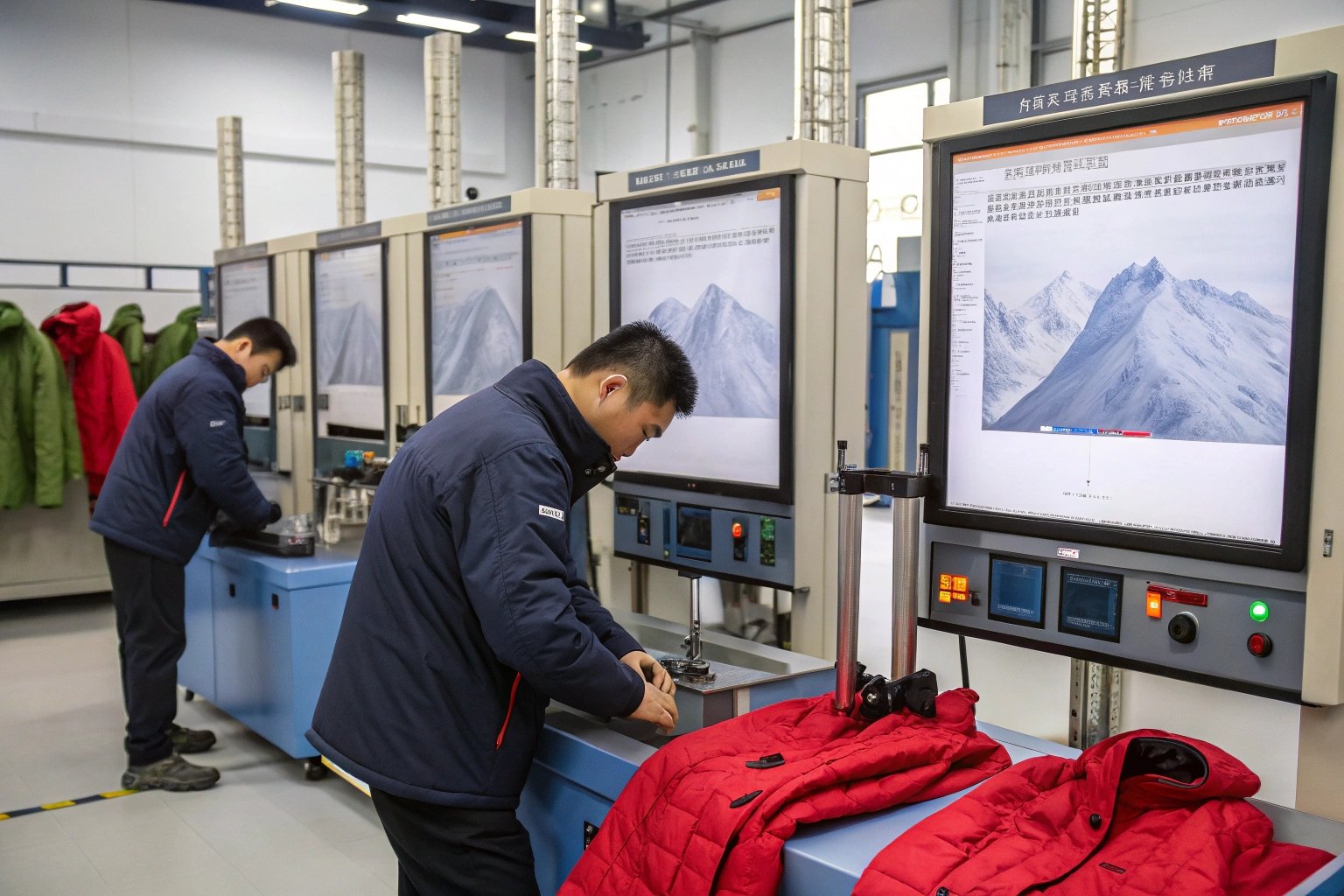In harsh outdoor environments, gear failure isn't just inconvenient—it can be dangerous. Technical outerwear must withstand extreme conditions, repeated stress, and unpredictable movements. One tiny tear can rapidly propagate across a jacket, turning premium garments into liabilities. For serious apparel brands and procurement professionals like Ron, tear strength testing isn’t just a formality—it’s a guarantee of performance and trust.
Tear strength testing is essential for technical outerwear fabrics because it measures the material's ability to resist the spread of rips under stress, ensuring durability, safety, and compliance with industry standards like ASTM D2261 and ISO 13937.
This article unpacks why this test is critical in fabric development, what standards to follow, how to interpret results, and where to source tear-tested textiles built for the toughest environments.
What Does Tear Strength Testing Measure Exactly?
Tear strength testing quantifies how well a fabric resists the spread of an initial cut or rupture when subjected to force. It is different from tensile strength, which measures a fabric's resistance to breaking under stretch.
In the real world, a branch snag, ski edge, or sharp backpack strap can cause small punctures. Tear strength determines whether that damage will stay minor—or become catastrophic.
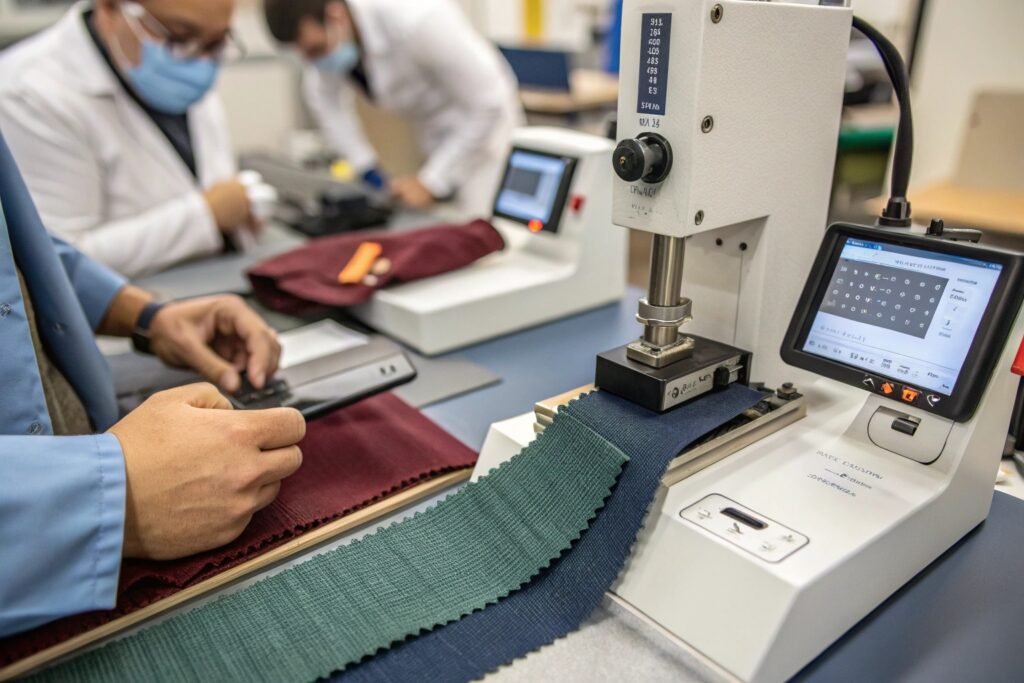
What Are the Common Tear Testing Methods?
There are several global standards, including:
- ASTM D2261 – Tongue (single tear) method, common in the U.S.
- ISO 13937-2 – Tear resistance for woven fabrics using the wing rip method.
- ASTM D1424 – Elmendorf pendulum method for measuring force required to continue a tear.
Full procedures are explained on ASTM’s website and ISO.org. Fumao uses ISO and ASTM-certified machines and can include test results per batch.
Why Is Tear Resistance Important for Outerwear?
Unlike city jackets, technical gear faces snags, pressure, and abrasion. Materials used in shell fabrics, such as Cordura, ripstop nylon, or stretch laminates, must survive intense action without fabric failure. Brands like Arc’teryx and The North Face routinely test for tear resistance in field conditions.
Which Fabrics Perform Best in Tear Strength Tests?
The tear strength of a fabric depends on its fiber type, weave structure, and finishing. Yarns with high tenacity and fabrics with reinforcement patterns (e.g., ripstop grids) perform much better than plain weaves or brushed knits.
Top-performing technical fabrics for outerwear include ripstop nylon, laminated softshells, Dyneema blends, and high-count polyester twills—all engineered to resist tearing under duress.
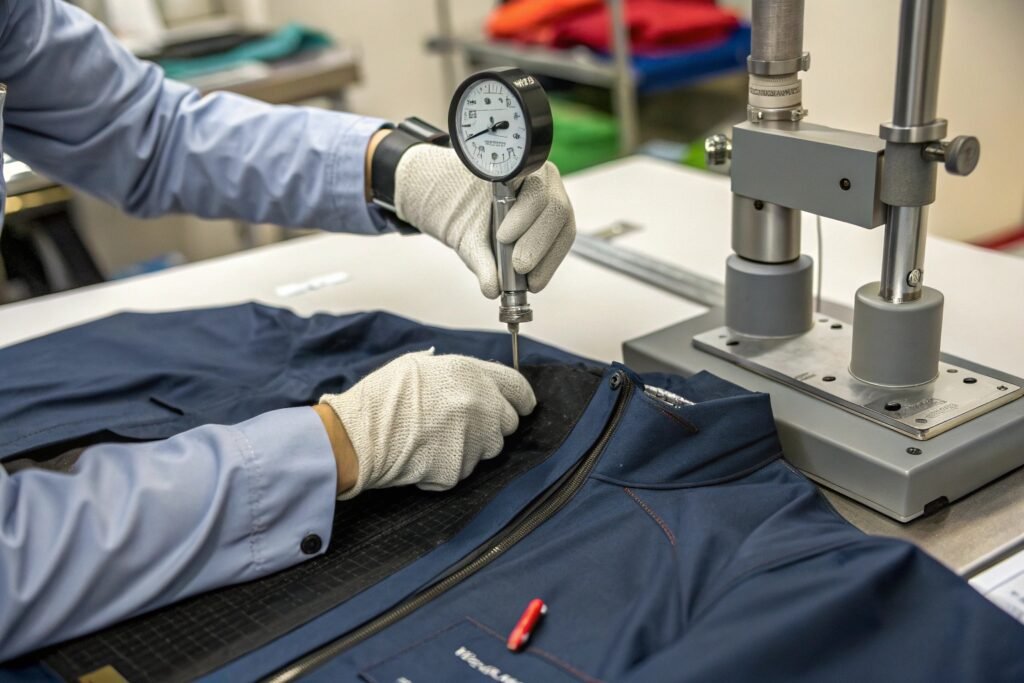
How Does Ripstop Fabric Prevent Tear Spread?
Ripstop fabrics feature thicker reinforcement yarns woven into a crosshatch pattern every few millimeters. This structure blocks the tear from propagating beyond its origin. As explained in Textile Today, these fabrics often use nylon 6,6 or polyester with PU or TPU laminates for added strength.
At Fumao, our 240D nylon ripstop with TPU backing scores over 18N in ISO 13937 tests—ideal for tactical jackets and outer shells.
What’s the Difference Between Nylon and Polyester Tear Strength?
Nylon generally offers higher tear strength due to its elasticity and molecular structure. However, polyester is more UV and abrasion-resistant. Many of our clients choose polyester-nylon blends for balanced performance. For technical layering systems, we recommend testing both warp and weft directions separately.
How Are Tear Strength Test Results Interpreted?
Tear strength is measured in Newtons (N) or grams-force (gf), depending on the method. These numbers translate into real-world performance benchmarks.
Understanding acceptable tear strength values by product category—like rain jackets vs. hiking trousers—ensures you're selecting the right material for each technical application.
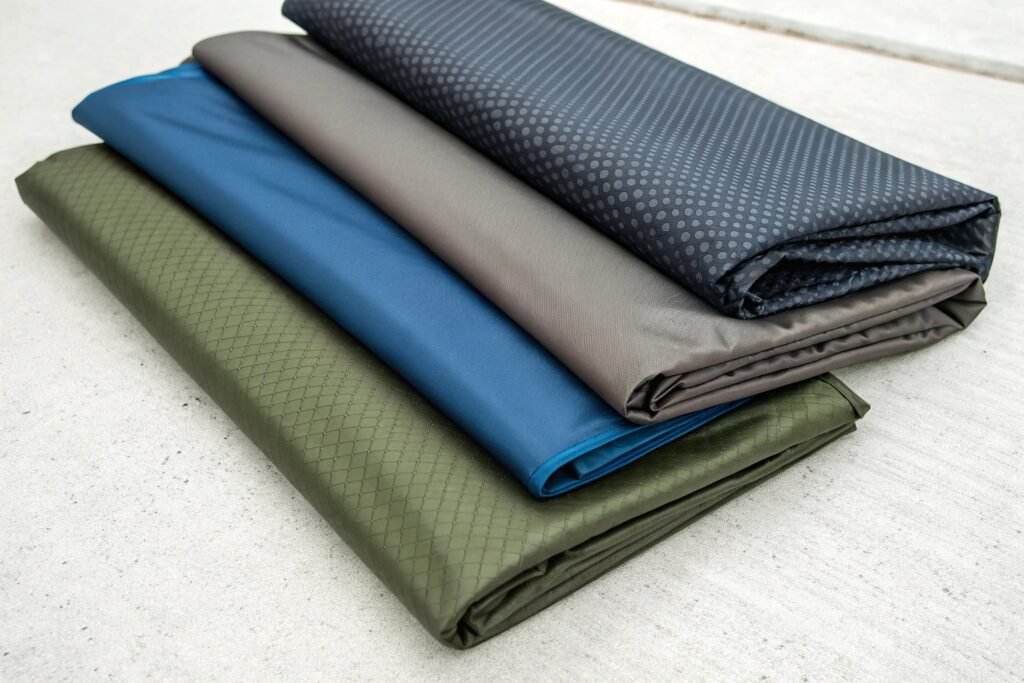
What Are Typical Minimum Tear Strength Values?
Here’s a general guide:
| Fabric Use | Min Tear Strength (ISO 13937-2) |
|---|---|
| Casual outerwear | 6–8 N |
| Rain shell jackets | 8–12 N |
| Hiking or mountaineering | 12–18 N |
| Military/tactical gear | 18–25 N |
We provide full lab test certificates and side-by-side comparisons for all technical fabric batches upon request. Our standard packaging includes a QR code linking to digital reports.
What If a Fabric Fails the Tear Test?
You can reinforce it by:
- Using interlining or bonding layers
- Choosing higher denier yarns
- Switching to ripstop constructions
- Adding surface coatings like PU or silicone
Consult Textile Learner for more on mechanical vs. chemical reinforcements. We also offer re-engineering support to improve underperforming fabrics.
Where Can You Source Tear-Tested Technical Outerwear Fabrics?
Finding outerwear fabric is easy—finding certified tear-tested fabric is harder. Most overseas suppliers don’t routinely test batches unless requested.
Reliable sources for tear-tested technical fabrics include certified textile exporters, trade fairs for performance wear, and factories like Fumao with in-house CNAS testing labs.
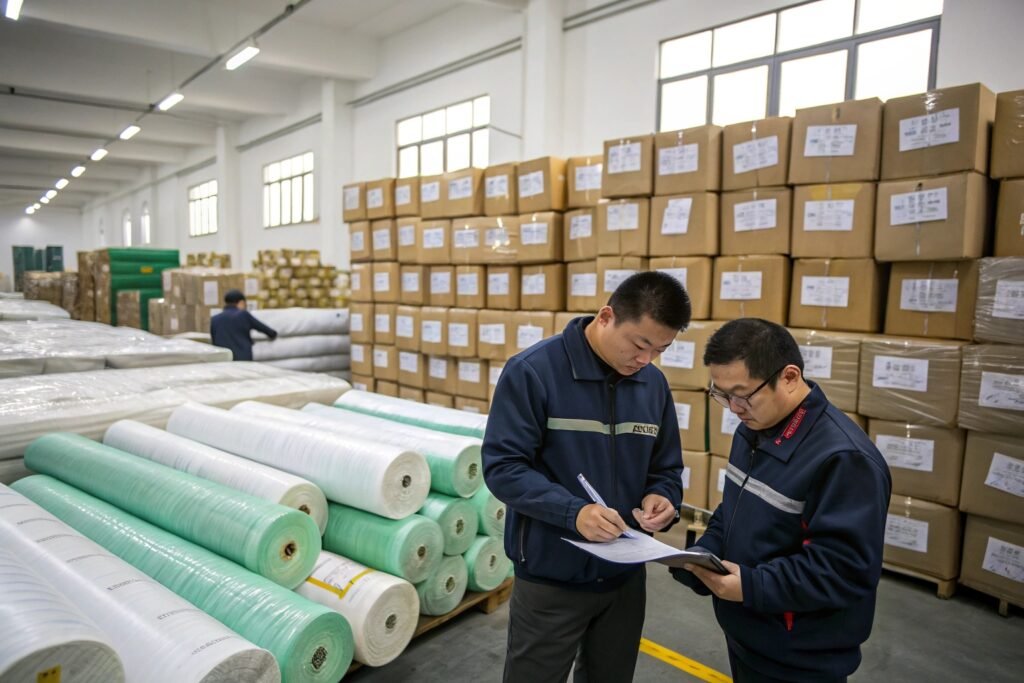
Which Trade Platforms Feature Tear-Tested Textiles?
Check out:
We also showcase our tested technical fabrics on Alibaba Verified and through custom sample kits for global clients.
How Does Fumao Ensure Batch Consistency?
Every technical fabric run at our mill is tested under ISO 13937 or ASTM D2261 using CNAS-certified equipment. Reports include both warp and weft data. We also offer third-party verification from SGS or TÜV Rheinland upon request. Clients can access lab dashboards via our digital order portal, keeping all compliance in one place.
Conclusion
Tear strength testing is more than a lab metric—it’s a performance safeguard for technical outerwear. Whether you're outfitting climbers, skiers, or first responders, your fabrics need to resist damage, hold up under stress, and deliver on durability promises. At Fumao Fabric, we combine advanced yarn technologies, ISO/ASTM lab testing, and real-world feedback to help you source outerwear textiles you can trust. Because when the fabric fails, so does your reputation—and we're here to make sure that never happens.

